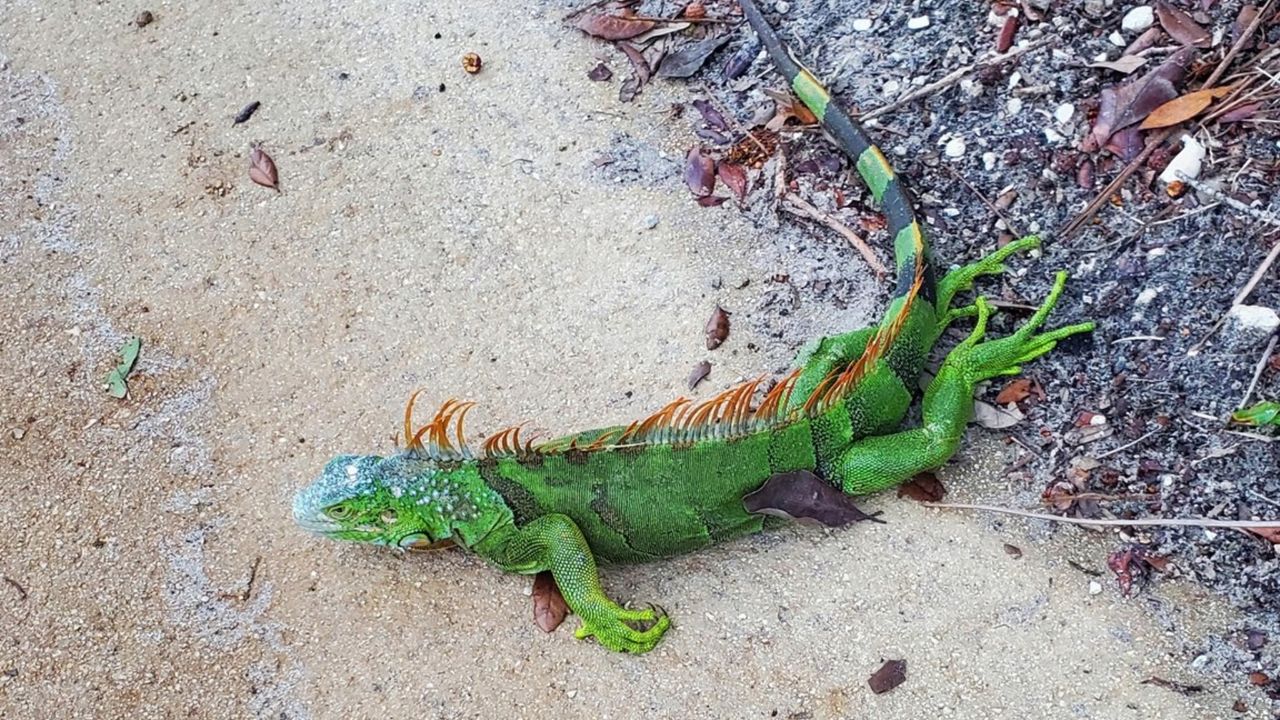With colder air across much of the U.S., including Florida, there’s one hazard you may not have considered: falling iguanas.
Iguanas are native to southern Mexico, central Brazil, Paraguay, Bolivia and parts of the Caribbean. With human help, iguanas were first introduced to the United States in 1966.
They either hopped aboard a boat coming to the U.S. or were brought in as pets and have since become an invasive species over the years. There’s a reason these large lizards live mainly in tropical climates.
Being cold-blooded, iguanas cannot survive in colder climates and typically stay in south Florida or the Rio Grande Valley of Texas. They have been spotted recently, however, in Central Florida.
With a warmer-than-average summer, iguanas may have been able to migrate a little further north than usual. This could become a problem this winter as temperatures drop.
Thanks to the polar vortex shifting south, cold air has surged into southern Florida, where temperatures are expected to drop into the 30s inland and 40s along the coast. This includes Miami, where the iguana population is high.
Pictures began circulating on social media of immobile iguanas lying belly-up. These reptiles start to freeze and become sluggish with temperatures only as low as 50 degrees.
As temperatures continue to fall, they become paralyzed. If this occurs while they are up in a tree, it's hazardous to unaware passersby below, as the heavy lizards lose their grip and fall from their perches.
In the past, the National Weather Service in Miami issued a “falling iguana” warning to residents when temperatures dropped into the 40s.
If you happen upon an immobile iguana, it’s best to keep your distance. Once they thaw out, they can become aggressive and bite or scratch.
Iguanas over two feet will typically survive a short-lived cold snap. If the cold persists, or if the iguana is smaller, they can have lasting effects or even end up dying.
Our team of meteorologists dives deep into the science of weather and breaks down timely weather data and information. To view more weather and climate stories, check out our weather blogs section.




